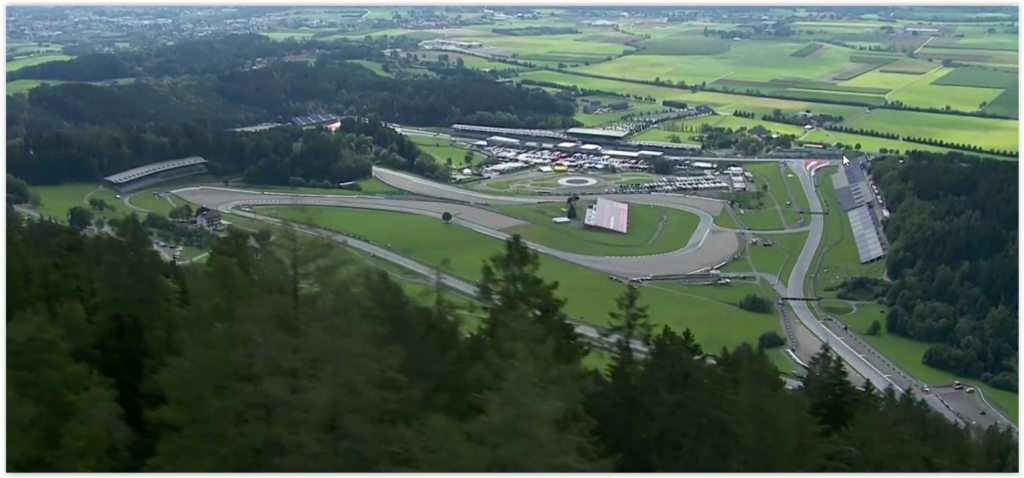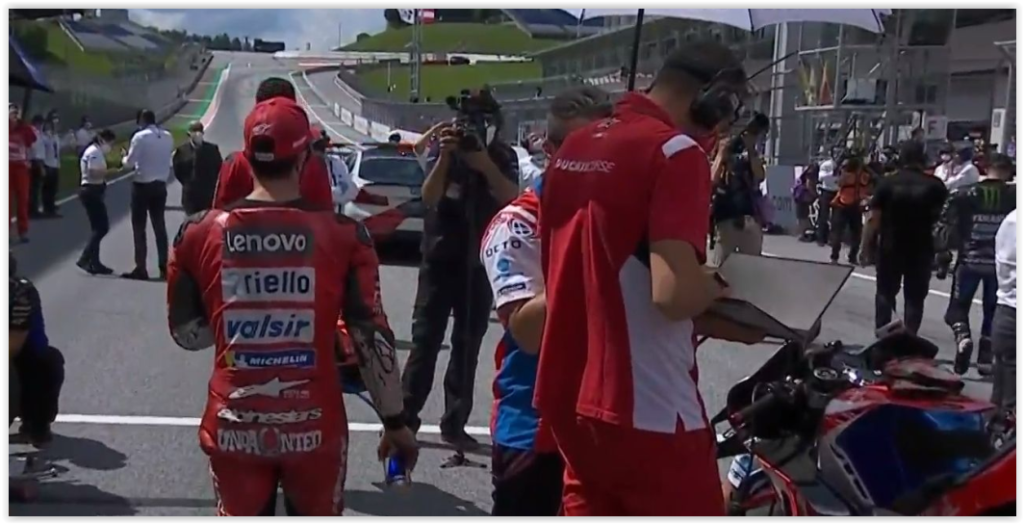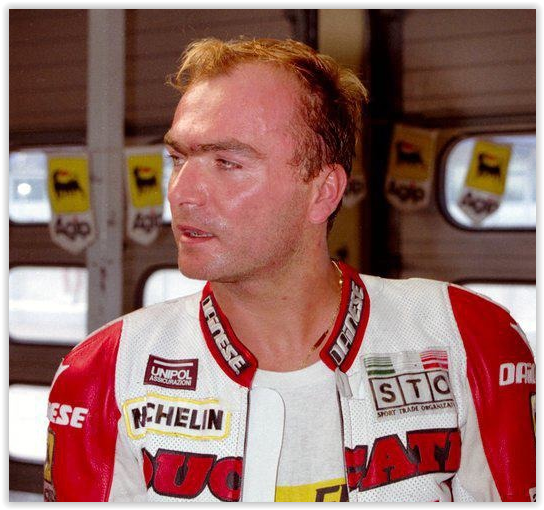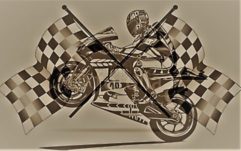
Before the second MotoGP race in Austria
The Grand Prix of Finland was cancelled in mid-May with the announcement that a double race would be held in Styria as in the first Corona year. The reason given for this was the Covid pandemic and the associated travel restrictions, which is doubly questionable. On the one hand, Austria has been a clear crisis country since the Ischgl Cluster, and there were no such problems in Finland. On the other hand, there were no restrictions for Finland in Europe in May or in July, in contrast to Portugal or England, for example, which have repeatedly been classified as crisis and high-risk areas due to mutations in the virus. In the paddock, the rumour got around that Red Bull wanted another race in the country of the European headquarters and is said to have offered Dorna a whopping sum for it. In addition, like at the Mandalika Circuit in Indonesia, there are still no photos of the completed course including the pit area and this is the particularly questionable part of the story because then Dorna would have participated in a lie when it officially announced the cancellation of the Finnish GP.

Why in a crisis region and not in uncritical Finland?
In contrast to Finland, the Alpine republic with regions like Tyrol was also repeatedly viewed critically and there were even problems with Germany due to border closings in order to prevent the risk of the so-called South Africa variant of Covid-19 being introduced. In contrast to Austria, the Scandinavian country has never made the headlines since the hotspot in Ischgl, and later again in Tyrol. Nevertheless, the premiere at the KymiRing was cancelled and now after 2020 there will be a second MotoGP double race in Styria instead of the GP of Finland, which is anything but plausible. Neither was the fact that the organizers had announced early on that they wanted to hold the two runs in front of a full house and without any number of spectators. The question of why people are driving in a crisis region and not in uncritical Finland kept many minds busy. As is so often the case, we will probably never find out the truth about this.

The Red Bull Ring in Spielberg
The layout of the former Austria Ring, which was rather unsuccessful due to the conversion as an A1 ring. Known today as the Red Bull Ring and unfortunately adopted with the same terrible characteristics. Turn 2 is not an actual turn and obviously only exists to fulfil the number 10. Correctly, the course actually only has nine real corners, which also have to be braked. With the start-finish straight and the parts between turns 1 and 3, as well as up to the tight turn four, all of them have to be driven at full throttle, even in MotoGP. Turn 2 is not a real curve and only serves the fact that you came up with the number ten. The only interesting part of the route is between Turn 4 and the finish curve 10. This very boring circuit is now the restaurant for the second double race of the 2021 season.

The record of the current riders for Spielberg
Marc Marquez’s numbers are falsified by his injury-related break in the previous year, and of course he is still the most successful rider in the short MotoGP history of the Red Bull Ring after Andrea Dovizioso. If you only take into account the number of races driven, his balance is an impressive 17.75 points per run, which is why he is automatically considered a favourite for the 2021 event. At least he should expect little resistance from today’s KTM test rider Dani Pedrosa, who is competing with a wildcard, even if he now knows the course like the back of his hand. The strongest challengers are automatically considered to be the Ducati riders due to the high proportion of full throttle, although KTM should not be underestimated due to the home advantage. But it is also quite possible that Fabio Quartararo and the Suzuki riders will be among the front-runners again.

The craziest story of Spielberg: The Return of the Lion of Jesi
In the early 90s there was a rider from Italy who almost lost his life on the course, which was then known as the Österreichring, with a significantly different layout. The details can be found in the WSBK story part 5 on this page (see History – WorldSBK 1988 – 1994). As a Ducati works rider, Giancarlo Falappa was the new teammate of the fast little Frenchman Raymond Roche, in contrast to him a former GP rider. The route at that time was simply life-threatening and in some cases unprotected crash barriers were only installed one to one and a half meters from the track, which was still completely normal in 1990. Only in the bends were these “secured” with sandbags, while this was not considered necessary on the long straights. On his birthday, of all things, the seventh World Cup at the time had a serious accident. Falappa had already injured himself two laps before in Mosport (Canada) and therefore missed 4 races. In Spielberg, the man from Jesi (southwest of the coastal city of Ancona) was hit fatally when he tried to avoid a slower rider and crashed into the guardrail at well over 200 kph. With 27 broken bones and a ruptured artery, the Italian narrowly escaped death and after 12 days in a coma, the doctors and those around him advised him to stop racing.

The incredible comeback
Disregarding all warnings and requests, Giancarlo returned the following year. He couldn’t bend his left leg properly, and worse, couldn’t use his left arm fully. It was difficult for him to lift it completely, but the hand for operating the clutch worked perfectly so far. The new beginning was difficult, but in Spielberg of all places he achieved only the second top ten result of the season, shortly after Laguna Seca. The Italian won his only podium at Hockenheim and a year later he finally made it back to the top. His new world champion was the US boy Doug Poland, who was the first private driver to become world champion in 1991 and then became his teammate in the Ducati works team. After three podium places, not only did his first victory come in the sixth lap in Spielberg, but he also won both Spielberg races. The average of Falappa’s fastest lap back then was 188.888 kph. In MotoGP, the fastest lap to date on the Red Bull Ring by Marc Marquez in 2019 was measured at an average of 187.2 kph. This was of course on the new track, after the conversion to the A1 ring, but the numbers and, above all, his mental strength are still impressive today.

The status of all classes in the World Championship at a glance

The schedule for the Styrian GP

The combined calendar for MotoGP and WorldSBK
In red letters are the collisions in which, especially in the first three cases, the simultaneous implementation of the MotoGP with the WSBK causes enormous damage to the latter. Hardly any broadcaster is likely to broadcast the WSSP and Superbike World Championship races live. For example, as a result of the Olympics, Eurosport completely waived the Most race. For the fans of the series, their teams and sponsors, this is of course a slap in the face. Incidentally, various events are currently on the brink of risk, especially the Malaysian GP in Sepang, WorldSBK Mandalika (Indonesia) and San Juan (Argentina). In this respect, a few more changes in the permanently provisional and chaotic calendar of FIM & Dorna can be expected.

Unless otherwise stated, this applies to all images (© MotoGP).

No Comments Yet